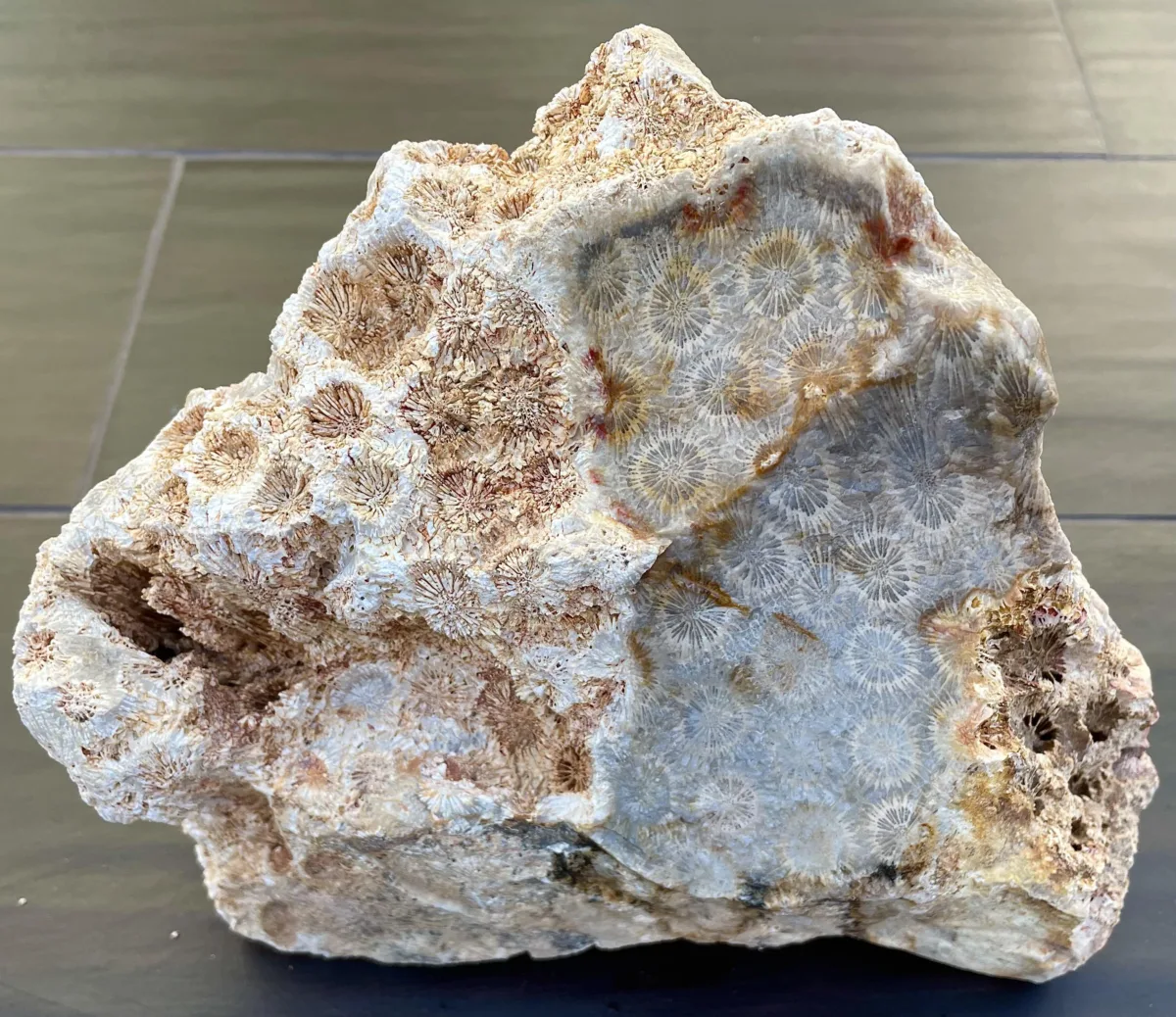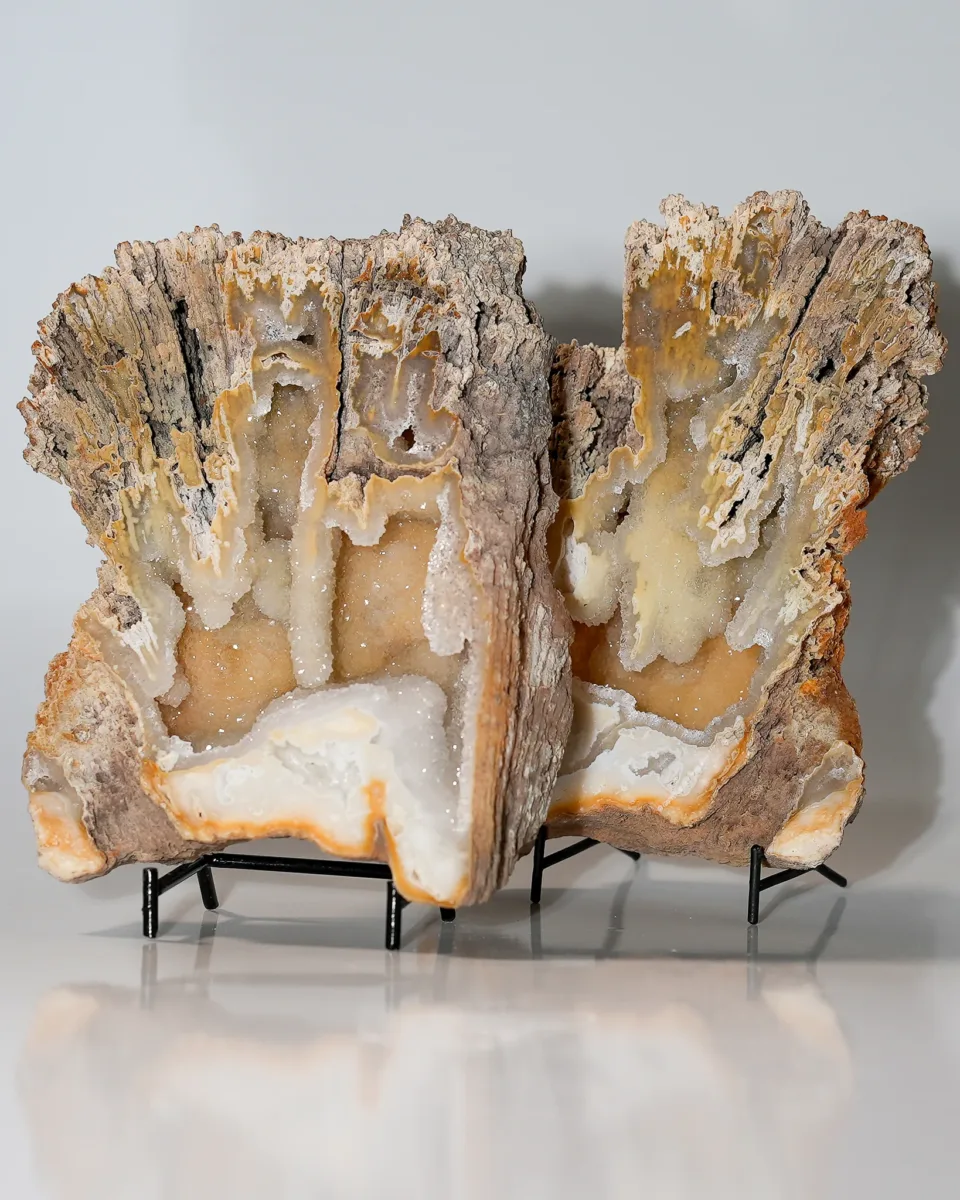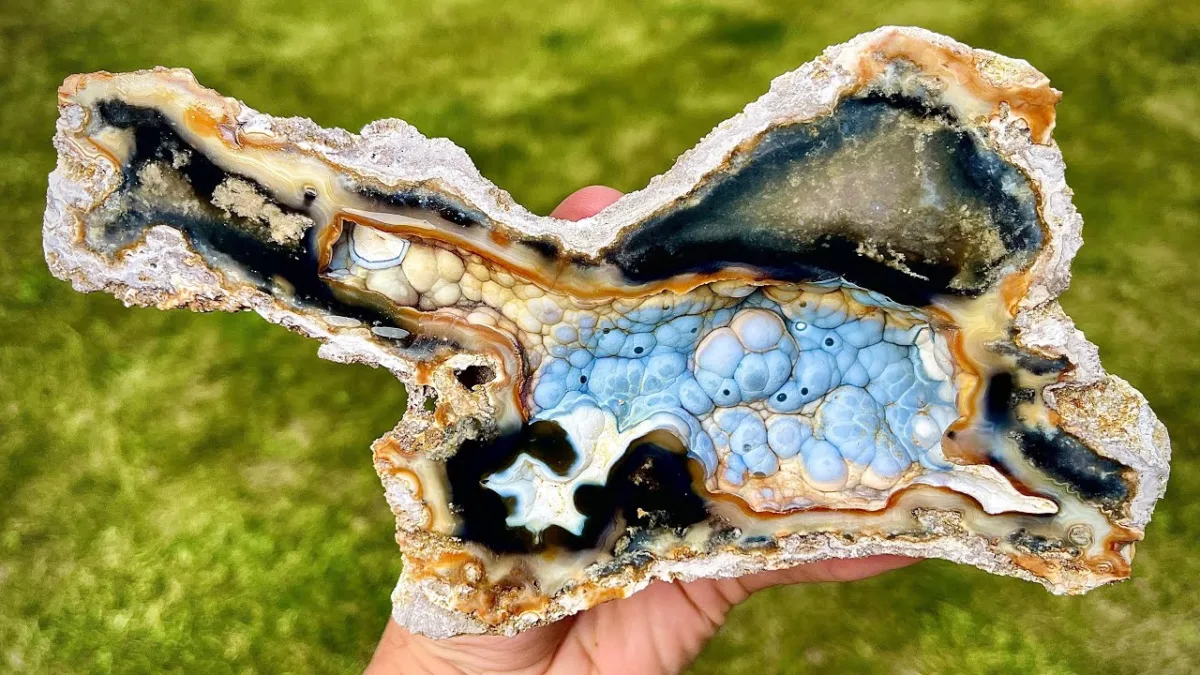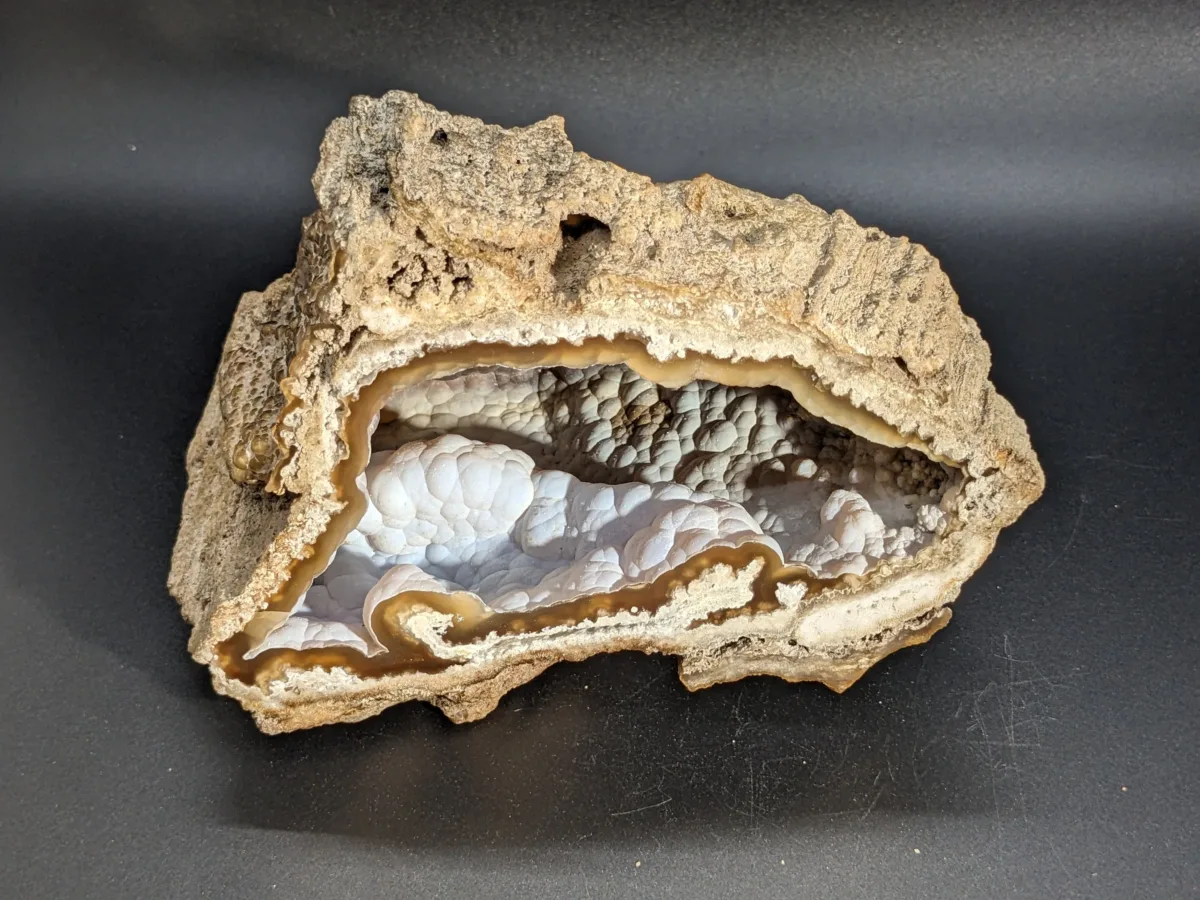Agatized coral, a unique and intriguing mineral, represents fossilized corals that have undergone silicification, where the organic coral structure has been replaced by silica over millions of years, primarily as chalcedony or quartz. This process, occurring in specific conditions, turns ancient corals into mineralized relics. Agatized coral is highly valued in both geological study and jewelry-making due to its intricate, colorful patterns and unique formation history.

1. Formation and Geologic Processes
Agatized coral forms through a process that involves the replacement of organic coral material by silica over extensive geological periods. This is essentially a type of permineralization—a common fossilization process where minerals from surrounding sediment or water gradually replace the original biological structures. For agatized coral, this replacement usually involves quartz or chalcedony, two silica-based minerals.

Key Formation Steps:
- Coral Growth: The process begins with the original coral organisms thriving in warm, shallow marine environments, particularly coral reefs.
- Silicification: Over time, corals die, and their skeletal structures, composed of calcium carbonate (CaCO₃), are buried under sediment.
- Mineral Infiltration: Silica-rich groundwater infiltrates the coral skeletons, beginning the replacement process where silicon dioxide (SiO₂) gradually replaces the calcium carbonate.
- Agate Formation: Chalcedony or quartz fills the cavities of the coral skeleton, creating colorful, agate-like banding, hence the name “agatized.”
This transformation can take place over millions of years and results in fossilized coral specimens that are nearly indestructible, resistant to weathering, and vibrantly patterned.
2. Geologic Timeframe and Location

Agatized coral specimens are typically between 20 and 40 million years old, although some can be as young as a few million years. These specimens are predominantly found in locations that were once warm, shallow seas but are now exposed land areas due to geological uplift.
Notable Locations:
- Florida, USA: Florida’s agatized coral is renowned globally and was formed during the Oligocene and Miocene epochs when the area was covered by shallow seas.
- Indonesia and Thailand: Other significant deposits are found in Southeast Asia, where warm waters and tectonic activity facilitated the silicification process.
- Wyoming, USA: Known for petrified wood, Wyoming also has occurrences of agatized coral, although less common than in Florida.
3. Types and Variations of Agatized Coral
The colors, patterns, and formations in agatized coral vary significantly depending on the local mineral content and environmental conditions during formation. Common colorations include white, gray, pink, red, orange, and black.
- Petoskey Stones: A well-known form of agatized coral found primarily in Michigan, known for its distinctive hexagonal patterns.
- Florida Agatized Coral: Known for its dramatic banding and varied colors, ranging from deep reds to blues, formed due to the unique mineral deposits in the area.
- Hexagonaria: This fossil coral, typically hexagonal in shape, is often associated with Petoskey stones and shows prominent silicification.
4. Uses and Economic Value

The unique aesthetics and durability of agatized coral make it popular in both lapidary arts and jewelry. Additionally, the high polish potential allows it to be used for intricate carvings, cabochons, and other decorative applications.
- Jewelry Making: Agatized coral is cut and polished for use in rings, pendants, earrings, and other jewelry items. Its rarity, particularly for high-quality specimens, makes it valuable and sought-after.
- Geological Study: Agatized coral offers paleontologists and geologists a window into ancient marine ecosystems and the mineralogical processes that can occur under specific environmental conditions.
- Collectibles and Display Pieces: Due to their aesthetic qualities, many agatized coral specimens are also popular as display pieces among fossil and mineral collectors.
5. Scientific Importance and Environmental Insights

Studying agatized coral provides valuable insights into paleoclimates and paleoecology. By analyzing these fossils, geologists and paleontologists can understand ancient reef ecosystems, changes in ocean chemistry, and even the climatic conditions that existed during specific geological periods. The presence of certain mineral inclusions within agatized coral can hint at the temperature, pH, and sedimentation levels of ancient seas, contributing to climate models and the understanding of Earth’s historical changes.
- Trace Element Analysis: Geochemists often analyze trace elements within agatized coral to determine historical geochemical compositions of seawater.
- Climate Models: Ancient coral reefs provide direct data for reconstructing past climates, particularly during warmer periods, offering insights for modern climate science.
6. Preservation and Conservation
Agatized coral, while highly durable, still faces issues related to over-collection, particularly in regions like Florida. Efforts are being made to conserve natural fossil sites by regulating collection activities and establishing protected areas.
Conclusion
Agatized coral is not only a geological marvel but also a vital component of Earth’s historical record. Its formation through complex silicification, its vivid colors, and intricate patterns all contribute to its beauty and scientific value. The fossilization of coral into agate reveals the dynamic interplay between biology and geology, providing clues to Earth’s past climate and ecosystems while serving as a beautiful and valued material in art and science.




































